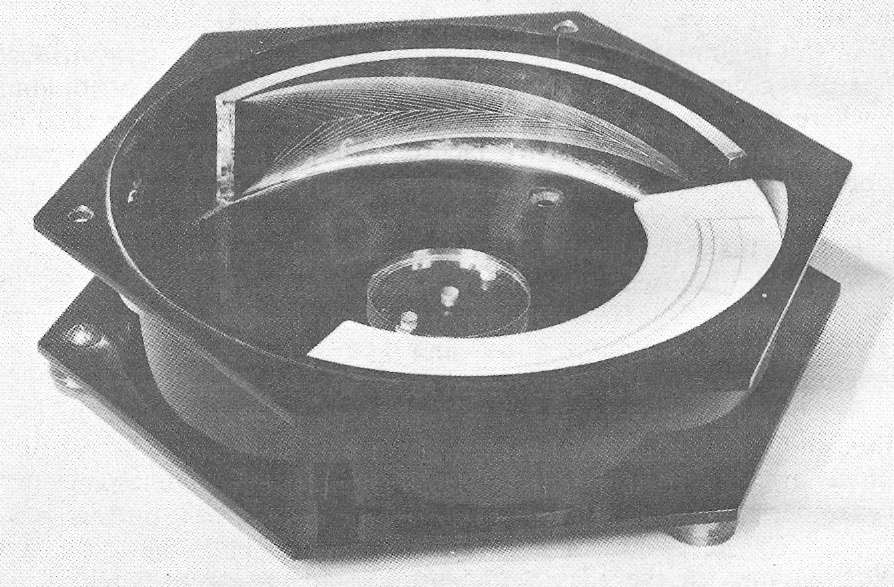Darrell Butcher – Discovering his Concepts
Darrell Butcher – Creator of the First Automatic Radionic Instrument
Is this too wild a claim to make? I think not, and my reasons will follow. But to answer the question adequately, it is first necessary to endeavour to understand Butcher’s thinking, for he never did anything without a reason.
Much of his life was spent as an aircraft engineer, a career which proved invaluable when in the 1950s he became interested in Radionics, and which led to years of unique experiment and research.
In the beginning he found himself unable to use the conventional means of registering the Radionic impulse by ‘stick-pad’ or pendulum, but where most men would have given in and sought another field of endeavour, he, with his creative faculty and technical skill, overcame this obstacle by the simple expedient of designing his own very personal instruments. Some, at least, appear to work entirely on their own, whilst others make use of the operator’s mind.
As yet undisclosed information about his experiments has come to light, together with interesting comments by himself. These I propose to give, together with illustrations and descriptions of eight of his instruments.
But before doing so, I must pay tribute to his exceptional creative ability, and to the quite exquisite precision work in their construction. He made every piece of equipment himself, and all of these are masterpieces of design and craftsmanship. These I will show with photographs.
With the exception of Pegotty, I found his instruments far too time-consuming for everyday work, but I could and did use them all in his laboratory and in my home.
Whilst describing his work I will give notes of what he had in mind and indicate his own words in quotes:
“We are going to discuss the Downpouring first. This is a known force. It has been given many names. I am of the personal opinion that different people are able to attract different amounts of this force, but it is always with us. And that it does come down vertically under normal circumstances and this can only be made use of if we abide by the laws of light, one of which states that: ‘Vibrations of the ether take place, not in the direction of the wave, but in a plane at right angles to it, and the latter are called transversal vibrations’. This is from Ganot’s Physics.”
“The meter is only important to those people who cannot use the ‘stick’ or pendulum. The Meter was necessary to me because I was quite unable to operate either of these. Which has been one great asset all the way through the 14 years of experimentation. Having to use a Meter one has had a useful form of comparison. For that is what all meters are. They are comparators. Meters have been of different sizes and shapes during all this time. The latest one, which is thought to be the best, though I do not suppose it will be the last, is very simple.” I will now describe his instruments beginning with the Meter.

Meter I
Meter 1
I believe that this was one of his early efforts. It is made of black perspex with a circular band 1″ deep and the circumference 6″ in diameter. On the top and bottom are fixed black hexagonal perspect plates. The central portion is covered to hide all working parts, with the exception of a white perspex measuring dial and a needle arm protruding from the suspension mechanism. On the top is a small black ring with a hole in it, presumably for a needle on which can be balanced a small metal holder for the patient’s sample. The feet are adjustable for levelling. When the cover is removed we find underneath the needle suspension frame – a plate 5-1/2″ in diameter, with a clearly engraved Archimedian Spiral and extending from the centre a carefully bevelled slit to the extremity.
Part of the Archimedian Spiral is covered with black paper of similar design. On the inside of the central frame will be seen a beautifully engraved design of an arrow on transparent perspex 6″ long and 1″ deep at one end. This must have been engraved flat and then bent to fit into the Meter.
Meter 2
In all other Meters I have seen the framework is rectangular. Needles appear to have been of different designs. In this Meter the Archimedian Spiral lies on the base and is made of black paper.
Meter 3
Here again we have a black base, but above it and under the needle suspension we find a different item which can only be appreciated from the following photograph.
“It has been ascertained that a cone made of thin paper, suspended freely, will revolve clockwise when in the presence of a human aura; I consider that the Fundamental Force comes into this, and in order for us, as human beings, to use it we have first to turn it into a spiral and that is why one hears so much about spirals in Radionics.”
“When the operator is facing a patient and a machine at resonance, the meter reacts in a clockwise direction taking up the spiral of the operator. Or that’s what appears to happen. And that is the basis of our diagnosis.”
“All this was made use of in the latest model and a form of cone was simulated within the rotar bar. The rotar bar itself which supports the needle has a small pin magnet and this is repelled by two other pin magnets, one at each side of the meter. The whole thing is adjustable for centering. And that broadly speaking is the meter.”


